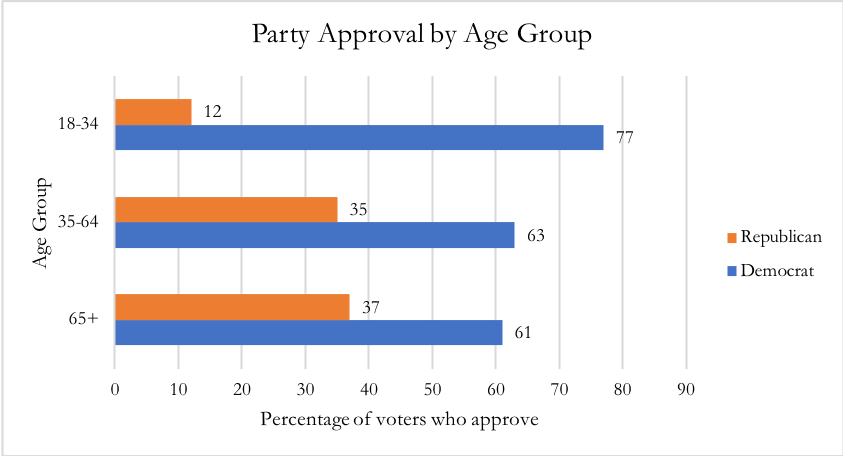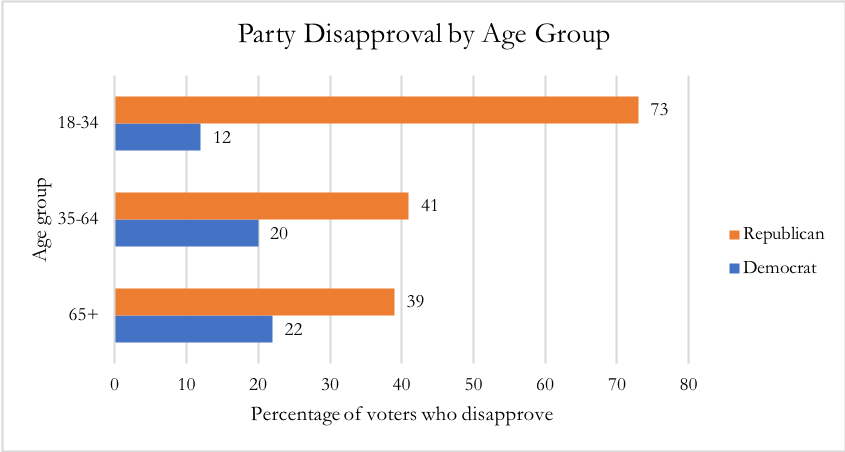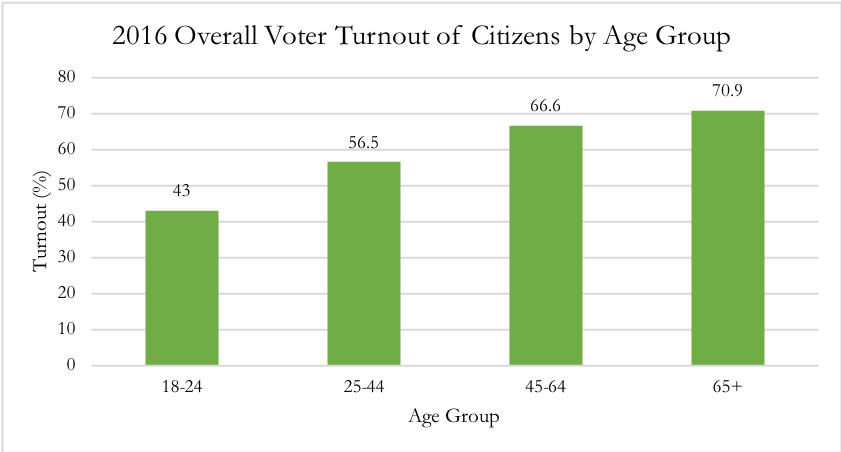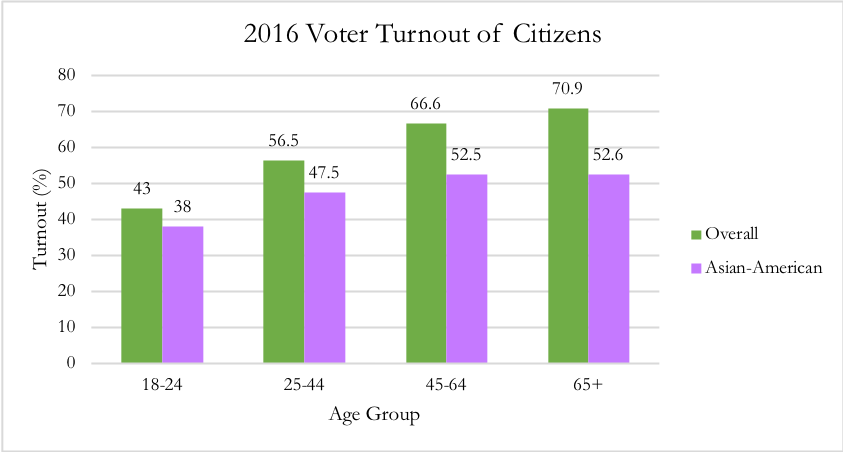POSTS
Young Asian Americans: A Growing Blue Coalition
Author: Lena Han
For many years, Asian-Americans were considered a swing vote—that is, when they voted. Asian-American voter turnout has consistently lagged behind other ethnic groups. Growing up, I and the majority of my Asian peers found ourselves surrounded by politically-unengaged parents who cared little about issues of environmental bills, healthcare, or civil rights.
More recently though, growing numbers of young Asian-Americans have been spurred into political activism, especially angered by the exclusionary rhetoric espoused by candidates on the right. As a result, a distinctive generational gap between younger and older Asian-American voters has formed.
For instance, below is an age comparison of the percentage of registered Asian-American voters who view each political party favorably (polled in 2016):
 Data Compiled from APIA vote
Data Compiled from APIA vote
Clearly, the Democratic party garners significantly more support than the Republican party, especially among the youth. However, perhaps even more telling is the percentage of registered Asian-American voters who actively disapprove of the political parties.
 Data Compiled from APIA vote
Data Compiled from APIA vote
Older Asian-American voters tend to be more apathetic to both parties, whereas nearly three in four young Asian-American voters disapprove of the Republican party. This is incredibly significant not only because Asians represent the fastest-growing ethnic group in the United States, but also because of increasing voter turnout by the Asian-American youth.
In general, older people tend to have a higher voter turnout. For instance, the following graph shows voter turnout in the 2016 general election.
 Data Compiled from US Census Bureau
Data Compiled from US Census Bureau
With Asian-Americans though, the relationship is not nearly as drastic.
 Data Compiled from US Census Bureau
Data Compiled from US Census Bureau
Although older voters still had higher turnout in the Asian-American community, it is clear that a transition in the Asian-American community is occurring. Younger Asian-Americans are becoming more politically-engaged and more liberal than their parents, and the Democratic party should take note.
Too often, political organizations overlook the Asian-American population because of its historically-low turnout rate. According to the 2012 AAPI Post-Election Survey, nearly 70% of Asian-Americans voters received no contact from either political party, compared to 61% of African-Americans and 57% of white voters. The young Asian-American population could become a strong Democratic coalition—if party leaders can realize it.